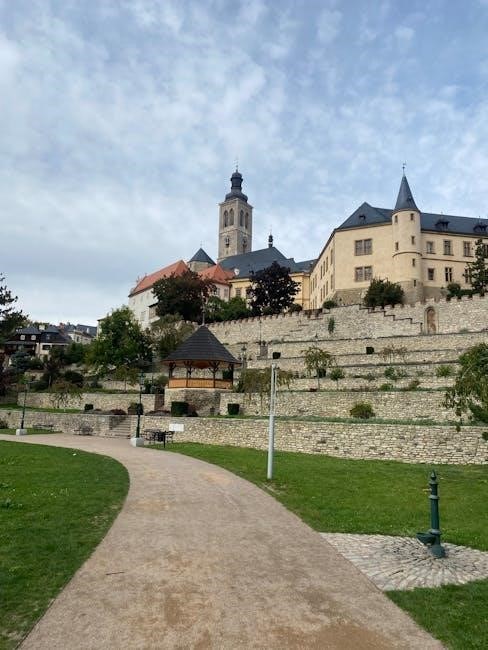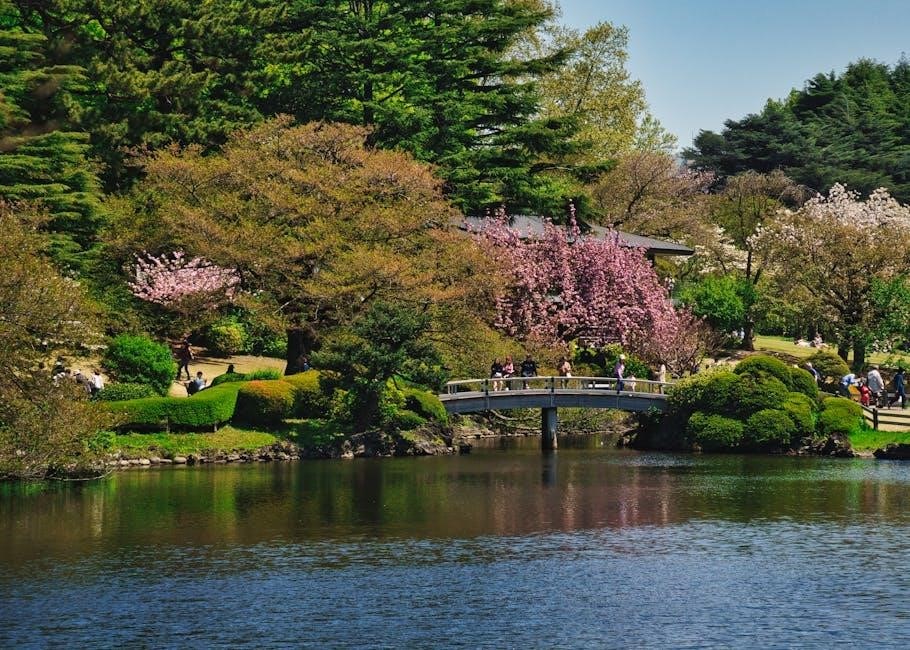The cultural landscape pdf provides information on human activity and environment interaction, forming a unique geographic area with cultural and natural resources, including wildlife and domestic animals within it naturally․
Definition of Cultural Landscape
The cultural landscape pdf defines it as a geographic area with cultural and natural resources, including wildlife and domestic animals, associated with a historic event or activity․
The United Nations Educational, Scientific and Cultural Organization defines it as the combined works of nature and man, expressing a long and intimate relationship between people and their environment․
This definition is also supported by the National Park Service, which views it as an area with cultural and natural resources, and aesthetic values, associated with a historic event or person․
The cultural landscape pdf provides a comprehensive understanding of this concept, highlighting its significance in preserving cultural heritage and promoting sustainable development․
It is a unique blend of human activity and environment, forming a distinct geographic area with its own characteristics and features, shaped by human history and culture over time, and continues to evolve․

Characteristics of Cultural Landscape
Cultural landscape characteristics include historic processes and patterns, physical expressions of tangible and intangible aspects of a place, shaped by human activity and environment interaction naturally always․
Landscape Characteristics
The cultural landscape pdf discusses landscape characteristics as evidence of historic processes or patterns, physical expressions of both tangible and intangible aspects of a place, influenced by human activity and environment interaction․
These characteristics can include land use, vegetation, and wildlife, as well as cultural features such as buildings, roads, and other infrastructure, all of which contribute to the unique character of a cultural landscape․
Understanding landscape characteristics is essential for managing and conserving cultural landscapes, as it allows for the identification of significant features and the development of strategies to protect and preserve them for future generations, which is a key aspect of cultural landscape management and conservation efforts․

Importance of Cultural Landscape
Cultural landscapes provide valuable insights into history and environment, shaping identities and communities naturally every day․
Cultural Significance
The cultural landscape pdf reveals the cultural significance of these areas, which are often considered sacred or spiritually important to indigenous communities and other groups․
These landscapes have been shaped by human activity over time, resulting in a unique blend of natural and cultural features that hold deep meaning for the people who inhabit them․
The cultural significance of these landscapes is not just limited to their aesthetic value, but also extends to their role in shaping the identity and traditions of the communities that live among them, with many landscapes holding important spiritual and cultural significance․
Preservation of Cultural Landscape
Conservation efforts involve protecting cultural landscape pdf areas from human impact and natural disasters naturally every day․
Conservation Efforts
Conservation efforts for the cultural landscape pdf involve a range of activities and strategies to protect and preserve these unique areas․
The goal of conservation is to maintain the integrity and authenticity of the cultural landscape, including its natural and cultural resources․
This can be achieved through the implementation of protective measures, such as the establishment of national parks or protected areas, and the development of sustainable tourism practices․
Additionally, conservation efforts may involve the restoration of damaged or degraded areas, as well as the promotion of community engagement and education․
By working together, individuals and organizations can help to conserve the cultural landscape pdf for future generations, while also promoting cultural heritage and biodiversity․
Effective conservation requires a collaborative approach, involving government agencies, local communities, and other stakeholders․
Overall, conservation efforts are essential for protecting the cultural landscape pdf and preserving its natural and cultural significance․

Examples of Cultural Landscape
Notable examples include historic sites, monuments, and traditional landscapes naturally․
Case Studies
Various case studies have been conducted to analyze the cultural landscape, providing insights into the complex relationships between human activity and the environment․ These studies often involve in-depth examinations of specific geographic areas, taking into account historical, social, and ecological factors․ The cultural landscape pdf offers a comprehensive overview of these case studies, highlighting the diversity of cultural landscapes worldwide․ By examining these studies, researchers can gain a deeper understanding of the ways in which human cultures interact with and shape their environments․ This knowledge can be applied to inform conservation efforts, urban planning, and other initiatives aimed at preserving and protecting cultural landscapes for future generations․ The case studies demonstrate the importance of considering the cultural landscape as a dynamic and multifaceted entity, influenced by a wide range of factors and processes․

Evolution of Cultural Landscape
The cultural landscape pdf reveals historical development and transformations over time naturally․
Historical Development
The cultural landscape pdf discusses the historical development of cultural landscapes, which is a complex and multifaceted process that has evolved over time․
It involves the interaction of human activities and the natural environment, resulting in unique geographic areas with cultural and natural resources․
The historical development of cultural landscapes is influenced by various factors, including social, economic, and political conditions․
These factors have shaped the cultural landscape pdf, forming a rich and diverse cultural heritage․
The cultural landscape pdf provides information on the historical development of cultural landscapes, including the transformation of natural environments into cultural landscapes․
It also discusses the role of human activities in shaping the cultural landscape, such as agriculture, urbanization, and conservation efforts․
The cultural landscape pdf is an important resource for understanding the historical development of cultural landscapes and their significance in modern society․
It offers insights into the complex relationships between human activities and the natural environment․
